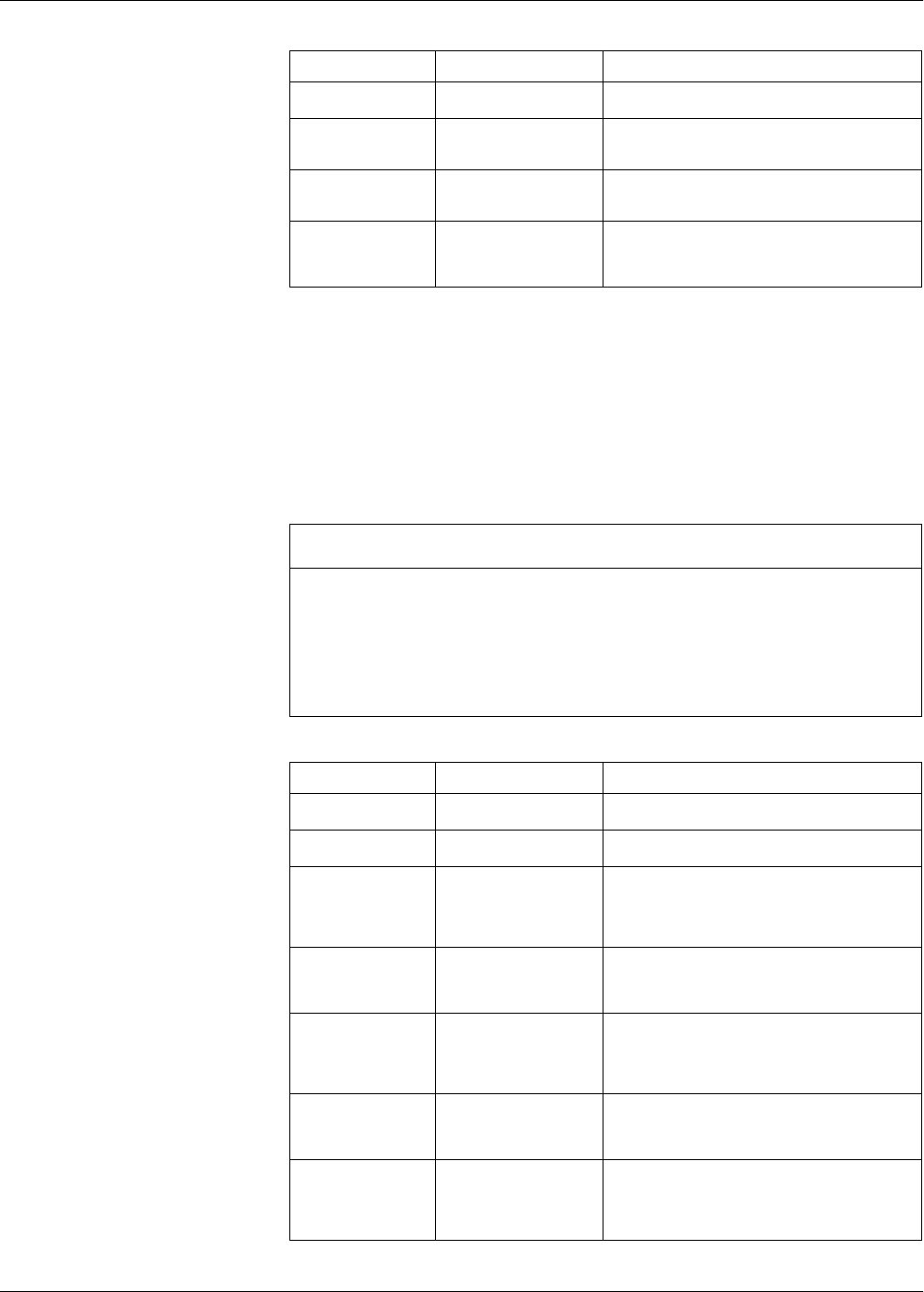
96 HRB1684301-01
Chapter 10—Alarms PowerLogic™ PM5500 series user manual
Setting up standard (1-sec) alarms
Select the standard (1-Sec) alarm you want to configure then use the following controls
to set up the alarm (ION Setup controls are shown in parentheses).
NOTE: It is recommended that you use ION Setup to configure standard (1-Sec)
alarms. ION Setup supports a higher resolution to allow you to specify more decimal
places when setting up the pickup setpoint and dropout setpoint values for certain
measurements.
Pickup Setpoint
(Setpoint Pickup)
On, Off
Use this setting to control when to trip the alarm, based
on the state of the digital input (On or Off).
Pickup Time Delay
(Delay)
0 to 999999
This specifies the number of seconds the digital input
must be in the alarm pickup state before the alarm is
tripped.
Dropout Time Delay
(Setpoint Dropout
Delay)
0 to 999999
This specifies the number of seconds the digital input
must be out of the alarm pickup state before the alarm
turns off.
Select Dig Output
(Outputs)
None,
Digital Output D1,
Digital Output D2,
Digital Output D1 & D2
Select the digital output(s) you want to control when the
alarm is triggered.
Digital alarm setup parameters (Continued)
Setting Option or range Description
NOTICE
UNINTENDED EQUIPMENT OPERATION
After configuring alarms in ION Setup:
• Do not use the meter display to make any changes to the alarms, otherwise all
decimals previously programmed in ION Setup will be lost.
Failure to follow these instructions can result in incorrect alarm functions.
Standard (1-sec) alarm setup parameters
Setting Option or range Description
Enable
Yes (checked) or No
(cleared)
This enables or disables the alarm.
Priority High, Medium, Low, None
This sets the alarm priority and notification options.
See “Alarm priorities” on page 94.
Pickup Setpoint
(Pickup Limit)
See “Standard (1-Sec)
alarms” on page 88
This is the value (magnitude) you define as the setpoint
limit for triggering the alarm. For “over” conditions, this
means the value has gone above the Pickup limit. For
“under” conditions, this means the value has gone
below the Pickup limit.
Pickup Time Delay
(Delay)
0 to 999999
This specifies the number of seconds the signal must
stay above the pickup setpoint (for “over” conditions),
or below the pickup setpoint (for “under” conditions)
before the alarm is tripped.
Dropout Setpoint
(Dropout Limit)
See “Standard (1-Sec)
alarms” on page 88
This is the value (magnitude) you define as the limit for
dropping out of the alarm condition. For “over”
conditions, this means the value has gone below the
Dropout limit. For “under” conditions, this means the
value has gone above the Pickup limit.
Dropout Time Delay
(Delay)
0 to 999999
This specifies the number of seconds the signal must
stay below the dropout setpoint (for “over” conditions),
or above the dropout setpoint (for “under” conditions)
before the alarm condition is ended.
PU Set Point Lead/Lag
(Lead, Lag)
Lead or Lag
Applies to PF (power factor) alarms only. Use this set
the PF value and quadrant to set the pickup setpoint for
an over PF condition (PF Leading) or under PF
condition (PF Lagging). See “Power factor (PF)” on
page 91
